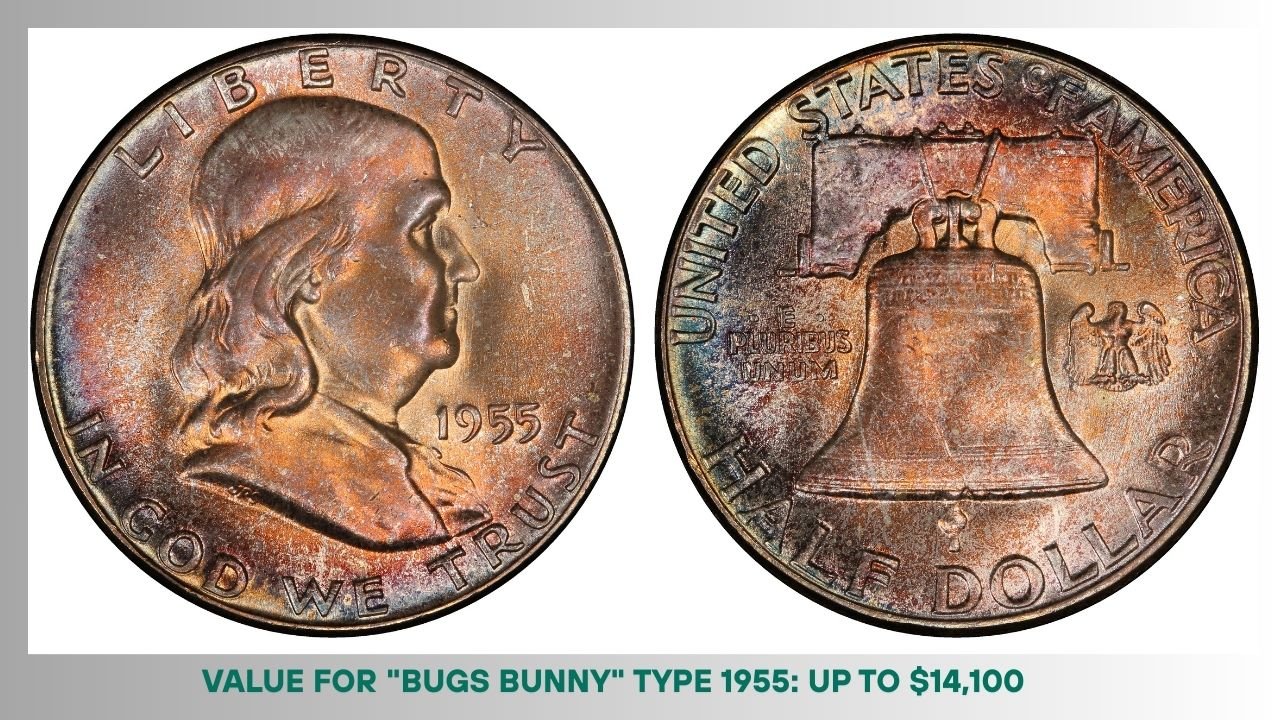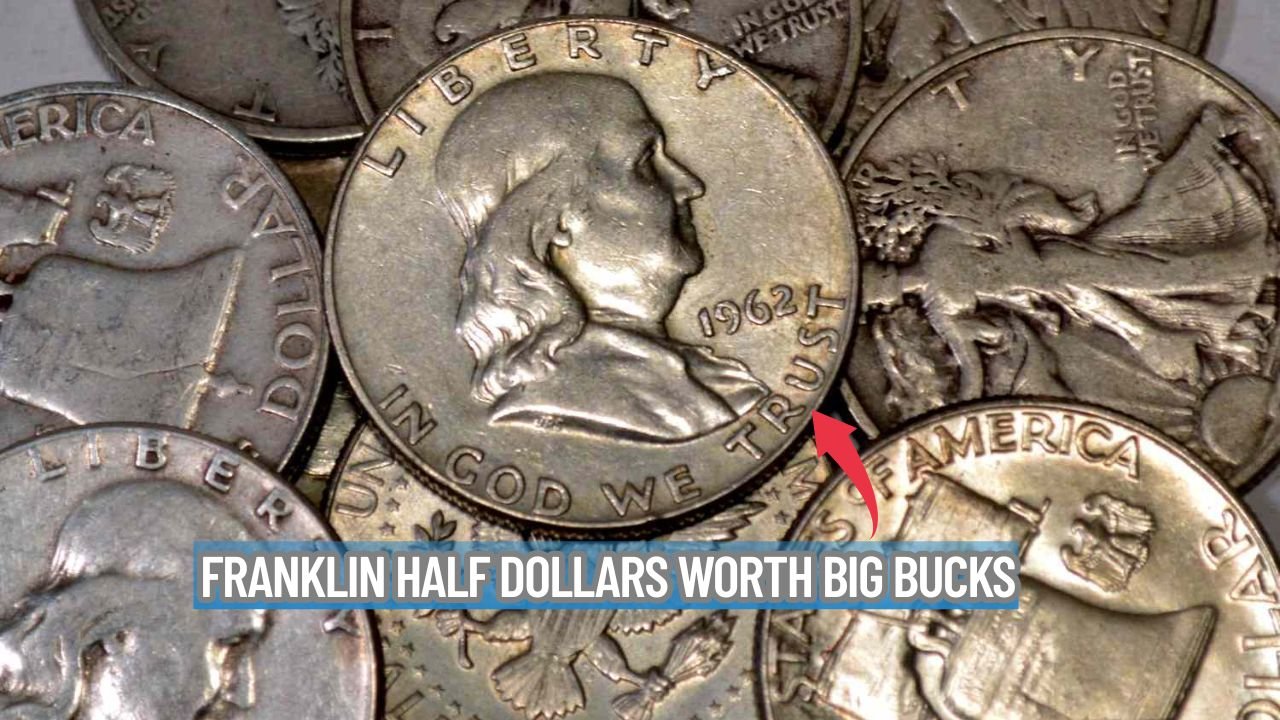Coin collecting is basically an exciting hobby because of the searching rewards. Additionally, there is the satisfaction of possessing history. Among all series, the Franklin Half Dollar remains an underappreciated yet collectible set in the eyes of the numismatist.
At first glance, these coins from 1948 to 1963 would appear quite common. But depending on the date, mint mark, and grade, they can eventually become worth thousands or even, in rarer instances, six figures!
In this guide, we will look at the most sought after Franklin half dollars and discuss why they can be so high in value. Whether you happen to be a veteran collector or simply a person who chanced upon an old cache of vintage coins, this list may just turn your spare change into a fortune.
What are Franklin half dollars?
In the Franklin half dollar, J.R. Sinnock designed a 50-cent piece with the Liberty Bell on the reverse and Benjamin Franklin on the obverse. Because these coins were struck with 90% silver and 10% copper, their historical significance is truly matched by their value as precious metals.
But not all Franklin half dollars carry equal standing in the world of numbers.
The factors for consideration are:
- Year of minting
- Mint mark
- Condition
- Designation of Full Bell Lines (FBL)
- Errors and special varieties
To who most coveted Franklin half dollars in their collections
The crown jewels of Franklin half dollars and are at the top in price in annual coin shows and auctions include:
Full Bell Line (FBL) 1958: Worth upwards of $129,250
Cause of rarity: This coin is mint because it has strong strikes with Full Bell Lines. Very few have attained this condition.
Collector’s tip: The distinct horizontal lines of the Liberty Bell are known as FBL. FBLs are valuable because they are very rare and very hard to strike.

FBL – 1963: Up to $85188 in the value
Why it’s rare: This is the last year of the series and only a small handful of great examples from FBL survived. Highly sought after for completing entire sets.
Valuation of 1953-S FBL: Worthy Amount of $69,000
Why it is so rare: This mint-year combination possesses FBLs that are relatively difficult to locate, as it is known that most coins from the San Francisco Mint are weakly struck in this series.
FBL Value in 1952: Up to $42,300
Why it’s uncommon: There aren’t many high-quality specimens with full bell lines. This one does well at auction every time.
FBL Value in 1950: Up to $39,600
Why it’s rare: It’s difficult to find this year in perfect FBL condition because it’s one of the oldest Franklin halves.
1951-S FBL: Up to $30,550 in value
Reason for rarity: San Francisco mint strikes frequently have little detail. This year’s FBL version is a fascinating find.
1949-S FBL value: Up to $31,725
Rarity Factors: S-mint weak strikes along with an early mintage contribute to its rarity in fine condition.
First Year for FBL: 1948
Value: Up to $28,750
FBL in MS-66 vintage or high examples that one may find really good, but it’s uncommon since it has more history in terms of it being the very first year.
FBL Value in 1960: Up to $28,200
Reasons for its rarity: Probably because of the prices of MS-66+ FBL coins being auctioned and not very few sold, even for the later years.
FBL Value in 1962: Up to $17,825
Why it’s rare: Less high-grade coins because of its wide-spread circulation make the FBLs remaining even more valuable.
It’s quite difficult because it’s the most historical as it concerns the first year, but one might locate FBL in MS-66 vintage or high examples that one would see really well.
Value for “Bugs Bunny” Type 1955: Up to $14,100
Reason for scarcity: In this peculiar version, Franklin has the “buck teeth” due to a die clash. Its rarity and the peculiarity of this type make it a very collectible error.

Doubled Die Reverse Proof 1961: Value up to $14,400
Why it is uncommon: A very clear and collectible error which is created by the doubling of the reverse letters. This is extremely rare in proof condition.
Understanding the Full Bell Line (FBL)
For a Franklin Half Dollar to be worth something, the coin must earn Full Bell Lines (FBL) status. The bottom lines of the Liberty Bell on the reverse side of the coin must be continuous and clearly struck for this designation to be awarded by grading services such as PCGS or NGC.
Few Franklin Halves display Full Bell Lines because of extremely poor strikes; hence FBL specimens, with much clearer lines, are rarer and thus very, very valuable. If the bell lines on your Franklin Half are strong and noticeable, it might just be worth a second look (and perhaps even a professional grade)!
The evaluation of the coins goes something like this:
- Using a magnifying lens, look for FBL areas.
- Look for coins that have great quality–good luster, little wear, and no scratches.
- Above the Liberty Bell on the reverse, look for mint marks for San Francisco and Denver: ‘S’ and ‘D,’ respectively.
- Look for any interesting variations, such as off-centers, doubled dies, or Bugs Bunny.
- Get it graded and send it in to be graded and certified by PCGS or NGC.
Post not found.
The question of whether Franklin half dollars have any significant value.
If you’ve inherited a coin collection or happen to be one of the mass who bought Franklin Half Dollars in bulk, it is quite possible that one or more coins in that collection will turn out into a hidden surprise. Depending on the right combination of rarity, strike quality, and grade, some of these coins can trade for thousands or even more.
Get a fair appraisal of your coins by a reputable numismatist, or send in for some best candidates for professional grading. Even if they don’t turn out to be six-figure rarities, the silver content will be enough for a base value.
What Are the Options for Buying and Selling Half Dollars in Franklin?
Whether you’re looking to sell a nice find or complete some series, here are some good markets:
- PCGS Coin Facts
- NGC Coin Explorer
- Heritage Auctions
- eBay (make sure you check pricing trends and seller ratings)
- Coin shows or local coin dealers
Concluding remarks
Ending notes: Franklin Half Dollars are not mere silver coins but treasures of beauty, history, and even fortune. The top-grade, Full Bell Line, and variety Franklin halves are very much sought after by collectors, who are always on the lookout for them.
Next time you see one of these coins closely, you might just be holding a numismatic cup of gold worth in excess of $30,000.
FAQS:
What is the gold content of the 1808 Capped Bust Quarter Eagle?
The gold content is 91.67% with a weight of 4.37 grams.
Is the 1808 Quarter Eagle the rarest U.S. coin?
It ranks among the rarest of the gold coins; other examples such as the 1933 Double Eagle may be more famous, but the 1808 Quarter Eagle is that much rarer, being a one-year type.
Can you find one in circulation?
That is highly unlikely. Most are in collections. However, some individuals may check old family heirlooms with lots of faded coins stuck inside or coin albums.
What should I do if I think I have one?
Do not clean it or modify it in any way. Get it graded by either PCGS or NGC and call a reputable dealer.
Are there counterfeits?
There are indeed counterfeits due to the value; specialists will be the only ones able to tell whether it is indeed counterfeit.
